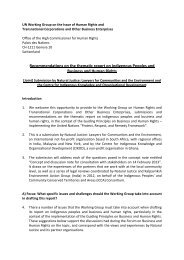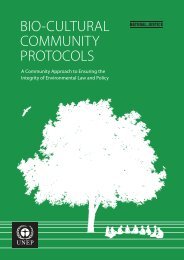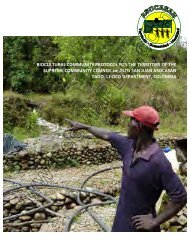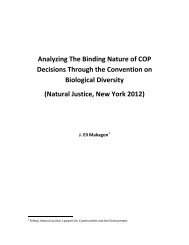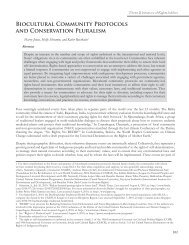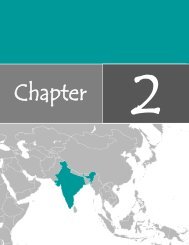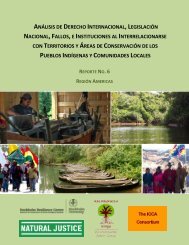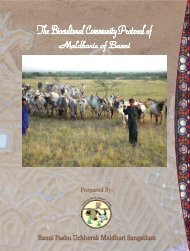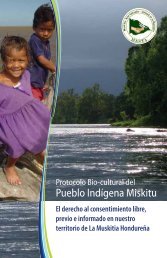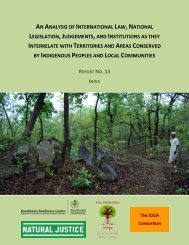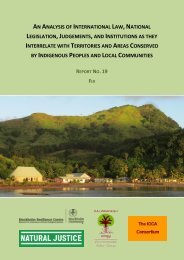English - Natural Justice
English - Natural Justice
English - Natural Justice
Create successful ePaper yourself
Turn your PDF publications into a flip-book with our unique Google optimized e-Paper software.
Human Rights and Constitutional ReformKenya’s new (2010) Constitution abolishes Trust Lands and replaces them with CommunityLands as a new tenure category, which has the potential to be one of the most importantreforms for community natural resource governance that has taken place in the region inrecent years.In 1991, Bolivia ratified ILO Convention 169, and the Constitutional Reform of 1994recognized the existence of Indigenous peoples and their right to Original Communal Lands(TCOs, in Spanish). Article 2 of the new Constitution (2009) states: “Considering the precolonialexistence of nations and original Indigenous peasant peoples and their ancestraldominance over their territories, the free determination within the framework of the unity ofthe State is guaranteed, which consists of their right to autonomy, self-government, theirculture, the recognition of their institutions and the consolidation of their territorial entities,in accordance with this Constitution and the Law”. In Article 30, the right to collective titleover lands and territories of Indigenous peoples is recognized, which is further elaborated inArticle 403. Indigenous peoples exercise a right to property and exclusive access, use andexploitation rights over renewable natural resources on their territories. Regarding nonrenewableresources and sub-soil resources like fossil fuels, only a right to prior andinformed consult and a share of the benefits of the exploitation is granted.However, the Bolivian Governmenthas combined the discourse ofdefending the rights of Mother Earthand the need for a ‘buen vivir’ (goodlife) in harmony with nature with anaggressive economic policy thatprioritizes the exploitation of fossilfuels, minerals and other naturalresources. The promotion of megaprojectswithin the framework of theregional infrastructure initiative ofSouth America (IIRSA, in Spanish),mines, biofuel production, soyexpansion, and hydro-electric damshas been accompanied by increasingThe IX Indigenous peoples’ march against the construction ofthe road through the TIPNIS, in their rise to the Andes (Bolivia).© www.ftierra.orgporosity of environmental regulations and a large number of social conflicts. The well-knownconflict over the proposed road through the TIPNIS (Isiboro Sécure National Park andIndigenous Territory) is but one example. Improve Implementation by Harmonizing Laws and UndertakingInstitutional ReformLaws require effective implementation to achieve their stated aims. Yet it is clear from theresearch that even in instances where there are laws that support human rights and ICCAs,they are often inappropriate, top-down, hindered by administrative barriers, uniformly orineffectively implemented, or overridden by laws and policies that contravene theirprovisions. Even in lieu of any new laws, significant improvement in many countries could beachieved through legal and institutional reform. This would involve rationalizing andharmonizing the full range of relevant laws as a cohesive framework, eradicating conflicts



